Music in Ancient Egypt
In a culture as full of religious rituals as ancient Egypt, music tends to be a significant part of every day life. With countless wall murals showing musicians playing while dancers danced and others stood off and watched. Instruments have been unearthed as well. But, despite knowing how they played, the ancient Egyptian music itself -- the notes, the composition -- is wholly unknown to us.
Music was as important in ancient Egypt just as it is today. This was especially true during Egyptian dynasties when pharaohs were established. It is around this time that many historians have discovered music in many parts of every day Egyptian life.
Musical Instruments
Through the study of hieroglyphs, researchers have learned that there were many ancient Egypt musical instruments. There are depictions of instruments of all kinds, including string, wind and percussion. The hieroglyphs also show those listening to music clapping their hands along with the performances.
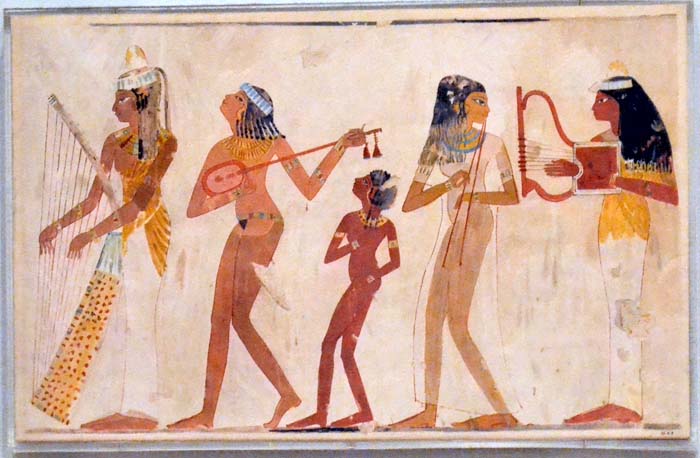
© ketrin1407 - Wall Painting Depicting Musicians
Ancient Egypt musical instruments found buried with the dead often have the names of the Egyptian gods Hathor and Bes, who were the gods of music, inscribed on them. Percussion instruments included rattles, drums and bells as well as something called a sistrum.
The sistrum was a metallic instrument held in the hand that was in a “U” shape. There were small metal or bronze pieces tied to the sistrum so that when it was moved, it made sounds. The sound differed depending on the type of metal used.
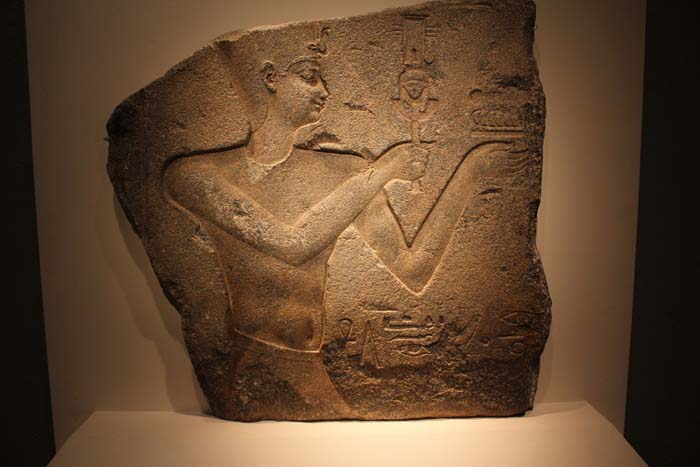
© Daniel DeCristo - Relief of Ptolemy II with a Sistrum
The wind instruments found were similar to those used today, such as trumpets and flutes while stringed instruments included lyres, harps and lutes. Ancient Egyptians did not use bowed instruments like today’s violin, but instead played stringed instruments with their fingers. The lyres were introduced around 2500 BC in nearby Syria , while the lute was used more widely during the New Kingdom period.
Harps were special in that they were of a much more complex design than other string instruments, and it was also common to deck out a harp with precious materials such as ebony, silver, gold, lapis lazuli, malachite, or anything valuable both monetarily and aesthetically.
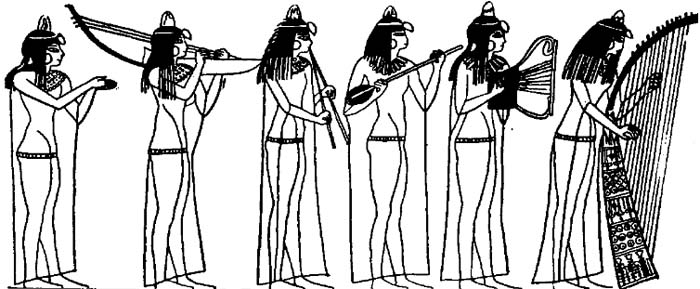
Illustration of Musicians in Ancient Egypt
Professional Musicians
The highest status for a musician in ancient Egypt was for temple musicians as playing music for a particular god or goddess placed someone in a high position in the culture. In addition, musicians who played for the royal family were also held in high regard as were gifted singers.
Musicians who acted as entertainment, even for royalty, at parties and festivals, were lower on the social scale than those who performed regularly in palaces or temples. There is very little information on amateur musicians in ancient Egypt which indicates that it was not considered favorable to achieve musically unless the individual was a professional.
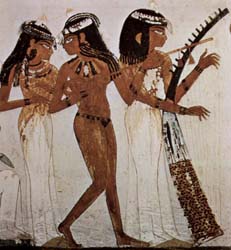
Musicians in Ancient Egypt
Singing in Ancient Egypt
Musicianship was highly regarded in ancient Egypt and singing was no exception. There are references to many during the era who were considered outstanding singers, including Amen Inaros, whose mother was also a songstress. Singers became quite common among females who were related to high officials and they often officiated at ceremonies.
Music was an important part of many ceremonies in the Egyptian culture with many inscriptions of songs found in tombs to be sung to the accompaniment of harps. Researchers believe that the songs found in the tombs were more than likely sung by priests and priestesses.
Clapping of hands during singing was an integral part of the culture during ancient Egypt, considered sacred. In some professions, such as grinding corn, those performing the task would chant, or sing, praises to the master of the house.
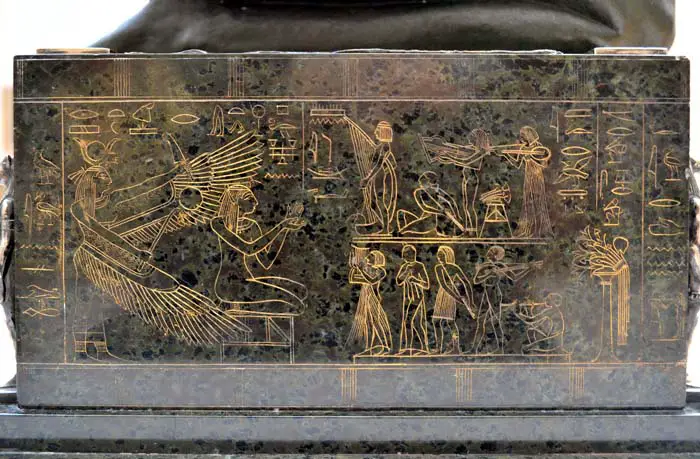
© ketrin1407 - Relief of Musicians
Ancient Egyptian Dancing
Not much is known about dancing in ancient Egypt, although there are depictions of dancing during the enthronement of a new king. There do not appear to be any depictions of men and women dancing to music together in ancient Egypt and their form of dance may have had Nubian influences. This type of dance became popular in Rome and parts of the Sudan still dance in this manner today.
It appears that dances in ancient Egypt were similar to modern ballet, meant to be expressive, and some appeared to include gymnastics. On special occasions, female servants or harem members were chosen to dance slow, elegant steps which more than likely alternated with acrobatic movements. Dancing was also part of the religious celebrations of the time.
Click here to learn more about Dancing in Ancient Egypt
Depictions of Arm Movements
One theory that developed among scholars who have studied facts about music in ancient Egypt, one that has been largely disproved, was that depictions of arm movements in hieroglyphics were used to communicate pitch to the musicians. However, recent research indicates that the arm movements were simply responses to songs today where people raise their arms and move in time with the music.
It is possible that in some of the depictions, the arm movements may be indicating where a musician should start or stop, but in all likelihood they are just people enjoying a song. One Terracotta figurine found by archaeologists may depict music notes, but there is not much more than a few horizontal lines crossed by vertical strokes. It is not until the Greek Period that a papyrus with musical notations was discovered, but the music and notes are Greek, not Egyptian.
There is no doubt that music played an important part of ancient Egypt, even prior to the end of the Persian rule. With musical instruments found in tombs that have been inscribed with the names of gods and goddesses, as well as depictions in hieroglyphics of musicians, singers and dancers, it appears that music has been a part of daily life for thousands of years.
Facts About Music in Ancient Egypt
- Songs were played during religious ceremonies and even in the tombs after people died.
- Like today, songs were heard while people worked, for royalty in palaces and even on battlefields during times of war.
- Egyptian music, based on the holes found in flutes of the time, was a minor pentatonic scale of five tones without half-tones.
- As ancient Egyptians conquered other cultures, their tastes adapted to those of the new lands, and new sounds were introduced.
- In fact, Egyptians did not note music prior to the Greco-Roman period, indicating that it was not an important part of daily life until the end of the Persian rule.
- Around the 18th Dynasty, music seems to take on an erotic connotation in the culture, with men and women robed in semi-transparent clothing, lotus flowers and gestures from the banquet attendees.
